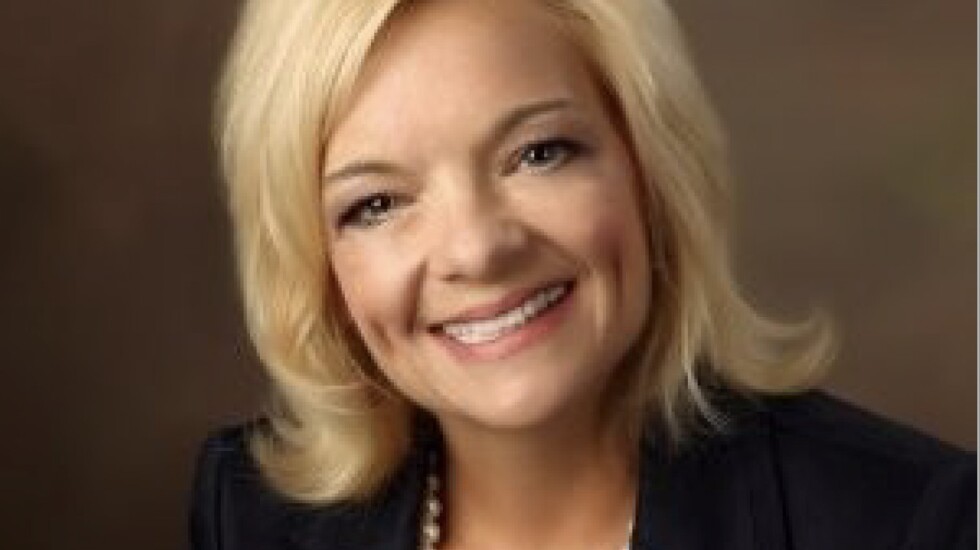
DECATUR — The question came out of the blue, or so it seemed to Crossing Healthcare CEO Tanya Andricks: If you had $30 million to design an addiction-treatment facility, how would you do it?
Howard Buffett, the interim sheriff in downstate Macon County, posed that question in 2018 as he and Andricks discussed the community’s needs. When she responded that she’d have to do some research, she was told not to take too long because the offer wouldn’t be there forever.
“I thought: ‘Oh, my God, he’s serious,’ ” Andricks said.
Buffett, the philanthropist-son of billionaire investor Warren Buffett, ended up giving Crossing about $30 million from his charitable foundation to build an addiction-treatment center in Decatur, population just over 69,000, in the heart of the central Illinois county.
There was a caveat, though. The donation to Crossing was a one-time gift to pay only for the buildings. It was up to Andricks to find money to run the programs. And that has proven difficult.
The COVID-19 pandemic upended everything months after the facilities opened in October 2019. According to an audited financial statement, the inpatient recovery center had lost $2.5 million by June 2021, and management worried about its ability to continue operating. Even so, the center remained open while other addiction-treatment facilities around the country went out of business.
Now, communities nationwide are preparing for an unprecedented windfall of their own for addiction treatment from a nearly $26 billion national opioid settlement and a more than $300 million expansion of a federal pilot program for mental health.
The experience at Crossing offers a model but also a warning: It will take more than a single shot of money to build a treatment program that can last.
Drug addiction wasn’t on Buffett’s radar until he joined the Macon County sheriff’s office as an auxiliary deputy in 2012. The county has had some treatment resources, like a behavioral health center, but it also has one of Illinois’ higher death rates from opioid overdoses.
Buffett moved to the area in 1992 to work for food-processing giant Archer Daniels Midland. He runs a farm nearby, and his Decatur-based foundation donates hundreds of millions of dollars for initiatives ranging from helping people kidnapped by Joseph Kony’s Lord’s Resistance Army in central Africa to revitalizing the cacao industry in El Salvador.
Soon after Buffett was appointed interim sheriff in 2017, he toured Crossing to learn more about social services. The health center offers primary care, including mental health, for all ages and sees roughly 17,500 patients a year. Most Crossing patients are on Medicaid, the public health insurance for people with low incomes.
“He was impressed with what we were able to provide patients,” Andricks says. “I don’t think he expected the scope and size of what we do.”

Addiction treatment, though, is notoriously difficult. Evidence supports treating addiction like a chronic illness. Which means that, even after difficult short-term behavior changes, it requires a lifetime of management. Research suggests that relapse rates can be higher than 85% in the first year of recovery. So any new treatment program is likely to face challenges.
Buffett didn’t set Crossing up for failure. He has helped fund other aspects of the organization’s work as well. Part of the idea behind paying for the addiction-treatment buildings but not the operations, Buffett says, is to keep his foundation “creative.” If it spends all of its money on the same programming every year, that means there’s less to fund other work around the world. He says it’s also about sustainability.
“If Tanya can show ‘with this investment, I made this work,’ ” Buffett says, “then other people should be making that investment.”
Crossing’s inpatient recovery center has eight beds for medication-assisted detox, 48 beds for rehabilitation and a cafeteria where meals are cooked with input from dietitians working with patients. An outpatient treatment center also has classrooms for continuing education, a gym with a small bowling alley and a movie theater. Buffett insisted on the last two amenities. “People have to feel good about getting better,” he says.
Another building has 64 beds for transitional housing, and just across the street are 20 rent-controlled apartments. Buffett spent an additional $25 million on buildings at that campus for other organizations focused on housing, workforce development and education, among other things.
“There’s a lot to like in this program,” says Dr. Bradley Stein, director of Rand Corp.’s Opioid Policy and Tools Information Center.
As positives, Stein points to the spectrum of care offered to patients as they progress in recovery, the use of medication-assisted treatment to help stave off physical cravings for opioids, the connection to the health center and even the involvement of law enforcement.
Laura Cogan, 36, a mother who has struggled with addiction since she was 14, is one of the patients working their way through the system. Cogan says she was the first patient when the recovery center opened. Less than 24 hours later, she also was the first patient to walk out.
She says the biggest challenge with her previous attempts at recovery were never being sure about what would come next: What was she supposed to do after getting out of detox and residential treatment?
Crossing’s approach was designed to address that by providing transitional housing, easy access to outpatient services and educational programming.
On her third attempt, Cogan got a round of applause after completing the first three days in detox. After six days, she joined residential treatment. After a month, she moved to transitional housing, began outpatient treatment and started offering peer support at Crossing. She tutored other patients, taught a writing class and helped them get on computers and fill out job applications.
Then, the pandemic hit.
Like other health centers around the nation, Crossing turned its attention to providing COVID testing and vaccines. Meanwhile, just about every aspect of addiction treatment became more expensive. Crossing halved the number of residential treatment beds, so each room would have only one patient, and converted the rooms into negative pressure chambers to reduce the risk of coronavirus transmission.
Staffing grew harder amid a nationwide nursing shortage. The number of patients in residential treatment dropped, Andricks says, because few people wanted to live inside a facility and wear masks. It was common to have as few as 10 beds occupied. The women’s unit was temporarily closed due to lack of demand and staffing constraints.
Cogan says several other transitional housing residents left once the $1,200 pandemic stimulus checks arrived, with some resuming treatment when that money dried up. But Cogan continued. Eventually, she moved to Crossing’s rent-controlled apartments, where she has been one of just a few tenants.
If not for the federal Paycheck Protection Program’s $1,375,200 forgivable loan in 2020, Andricks says, the outpatient treatment program might have had to close altogether.
But things started to change for the recovery center last spring as the number of COVID cases tapered off, Andricks says. Hiring became easier. More patients arrived. In October, the center got a grant to use the apartments for women with a history of substance misuse who are pregnant or have given birth within the past year. In addition to Cogran, six women have been placed there. The inpatient recovery center now averages about 27 occupied beds, within striking distance of the 30 that Andricks says the inpatient center needs to survive.
Crossing’s program quadrupled the number of residential treatment beds in Macon County, according to Andricks. In the three years since the inpatient recovery center opened, it has had more than 1,300 admissions. Most patients haven’t stayed in recovery. But staff members have seen a pattern of success with those like Cogan who stay on campus and become involved with recovery offerings — though Andricks estimates that’s fewer than 10% of the patients.
Cogan says she hopes Crossing doesn’t get discouraged. People are going to mess up, but she’s proof of the impact the recovery center can have, she says.
“I’m one of the lucky ones and I don’t know why,” says Cogan, sitting on a couch in the apartment on Crossing’s campus she shares with her 12-year-old son since regaining custody of him. “I just know that today I am. And I hope that more people get the opportunity.”
KHN (Kaiser Health News) is a national newsroom that produces in-depth journalism on health issues.







